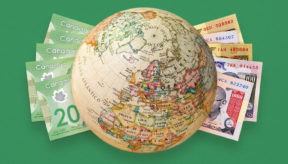Sponsored by H&R Block
Completing taxes for the first time in a new country can be a daunting task, especially if you’re unfamiliar with the tax laws and regulations. As a newcomer to the country, I found myself in this exact situation, and I must admit that it was a bit overwhelming. However, with the right tools, research and guidance, I was able to successfully complete my taxes and gain a better understanding of the Canadian tax system.
Step 1
Gather all the necessary documents.
This includes a T4 slip from my employer, which summarizes my income and deductions, as well as any receipts for charitable donations, medical expenses, and tuition fees paid. I would recommend having other details handy such as – Social Insurance Number (SIN), residency status, assets & investments, if any, and previous year’s tax return, if applicable. It’s important to keep track of these documents throughout the year to ensure you have all the necessary information come tax time.
Step 2
Choose your method of filing.
Once I had all my documents in order, I decided to use a tax preparation software to complete my taxes – like the Do It Yourself Software from H&R Block. This made the process a lot easier since the software guides you through each step and prompts you to enter the necessary information. The software allowed me to save my progress and come back to it later, if required. The software also calculated my refund or amount owing, which gave me a clear idea of my financial situation.
If doing it yourself doesn’t sound appealing to you, there are Tax Experts at your disposal to file in-office, or online for you.
Step 3
Understand available Canadian tax benefits.
One of the most significant differences I noticed when completing my taxes in Canada for the first time was the concept of tax credits. In Canada, there are several tax credits available that can reduce the amount of tax you owe or increase your refund. Some of these credits include the Canada Child Benefit, the Disability Tax Credit, and the Work from Home expenses credit, etc. I soon realized that I would have saved more if I had taken some guidance from a tax expert. I would recommend reaching out to a tax expert to understand how you can benefit from RRSP and TFSA to reduce your tax liability.
After completing my tax return, I printed it out and sent it to the Canada Revenue Agency (CRA) through mail. I found this to be a convenient and straightforward process, and I received my Notice of Assessment within a few weeks.
Overall, completing my taxes in Canada for the first time was not as intimidating as I initially thought. I now have a better understanding of the Canadian tax system and the importance of keeping track of my financial records throughout the year.
If it’s your first time filing in Canada, the Tax Experts at H&R Block can help. With over 900 locations across Canada, and multiple ways to file, they work for you to ensure you get every cent you’re owed. Get started in-office, or online today.
About Rohan:
Rohan is a Chartered Accountant from India and is now working as a senior financial analyst. Rohan loves to keep himself updated about the macroeconomic
environment and take trades in stock markets based on that. He loves being outdoors (if the weather permits) and loves to spend his free time watching web series/movies.
*Opinions expressed are those of the author, and not necessarily those of Student Life Network or their partners.




